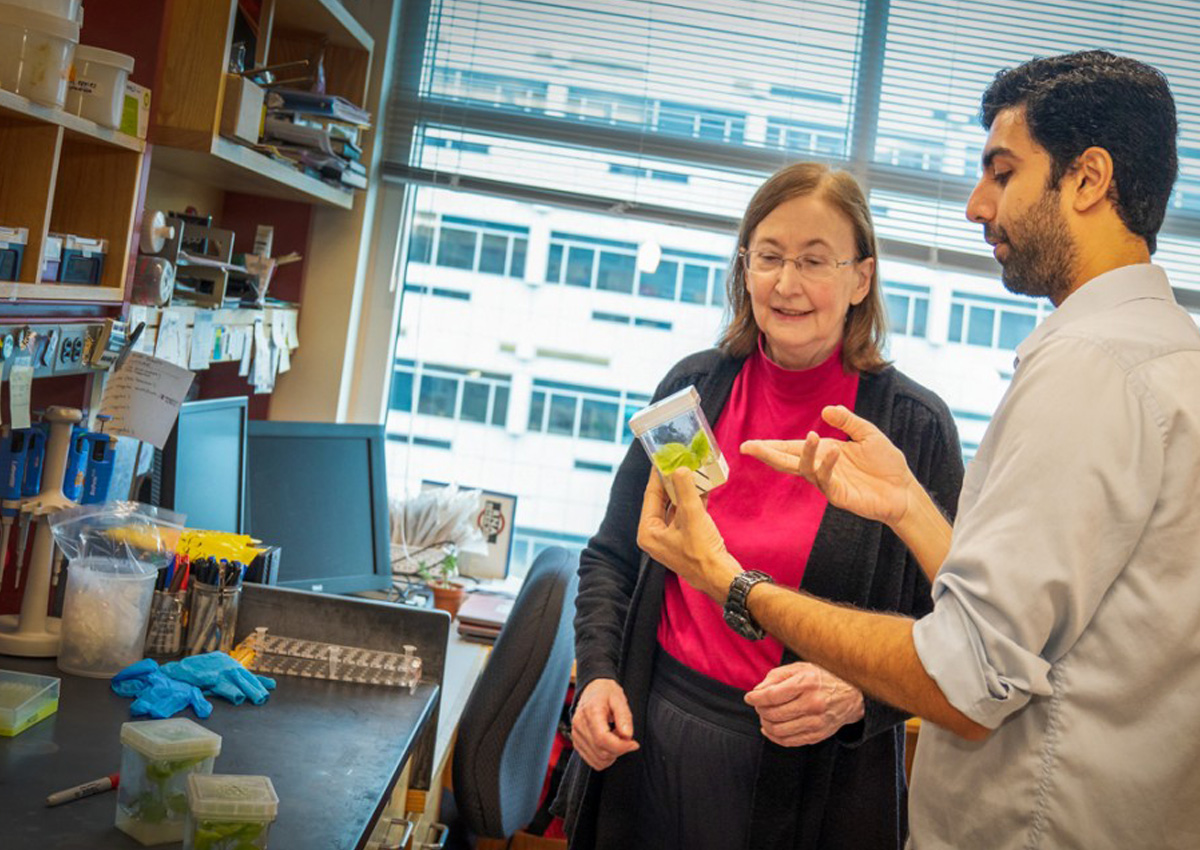
Scientists Work to Improve Crops' Photosynthesis and Yields
August 18, 2021| |
Plant scientists are continuously in a race against time to develop crops with higher yields in order to feed the projected 9 billion people on the planet by 2050. A study led by Dr. Maureen Hanson from Cornell University describes their work in putting elements from cyanobacteria into crop plants for more efficient photosynthesis.
Rubisco's reaction to both carbon dioxide and oxygen in the air is a hurdle in improving photosynthesis. Such reaction to air creates toxic byproducts, slows photosynthesis, and thereby lowers crop yields. However, in cyanobacteria, Rubisco is contained within microcompartments called carboxysomes that shield Rubisco from oxygen. Carboxysome allows cyanobacteria to concentrate carbon dioxide so Rubisco can use it for faster carbon fixation. "Crop plants don't have carboxysomes, so the idea is to eventually put in the entire carbon-concentrating mechanism from cyanobacteria into crop plants," Hanson said.
For this system to work in crop plants, scientists must remove carbonic anhydrase, a naturally occurring enzyme, from the chloroplasts, organelles in plant cells where photosynthesis occurs. The researchers used CRISPR-Cas9 to disable genes that express two carbonic anhydrase enzymes that are present in chloroplasts. In the past, another research group used a different method to remove 99 percent of the anhydrase enzyme's activity, and the plants grew normally. When Hanson's team removed 100 percent of the enzyme's activity, the plants barely grew. "It showed that plants need this enzyme to make bicarbonate that is used in pathways to make components of leaf tissue," Hanson said. Experiments showed that the absence of carbonic anhydrase did not interfere with photosynthesis, contrary to previously held views.
For more details, read the article in Cornell Chronicle.
| |
You might also like:
- Discovery Ends Long-Standing Photosynthesis Controversy
- Experts Unlock Key to Photosynthesis
- Structure and Function of Photosynthesis Protein Explained in Detail
Biotech Updates is a weekly newsletter of ISAAA, a not-for-profit organization. It is distributed for free to over 22,000 subscribers worldwide to inform them about the key developments in biosciences, especially in biotechnology. Your support will help us in our mission to feed the world with knowledge. You can help by donating as little as $10.
-
See more articles:
-
News from Around the World
- The Biotech Game: A Negotiation Simulation of Science Diplomacy
- The Impact of Gene Technology in Animal Agriculture and Food Production
- New Genotyping Technology to Boost Africa's Wheat Breeding Programs
- University of Illinois Study Opens Black Box of Herbicide Resistance
- Scientists Work to Improve Crops' Photosynthesis and Yields
- Researchers Develop Technique to Map Out Regulatory Switches in Maize Genome
- Gene to Make Plants Heat-Tolerant in Rising Temperatures Gets Patent
- Philippines on the Right Path With Genome Editing Regulations
- GMO Panel Finds GM Carnation Does Not Pose Risk To Health, Environment
- EFSA GMO Panel: Cotton GHB811 as Safe as Conventional Counterpart
-
Plant
- Researchers Present Prospects for Genome Editing of Potato
- IGI Works on Net-Zero Farming and Carbon Capture
-
Read the latest: - Biotech Updates (December 10, 2025)
- Gene Editing Supplement (November 26, 2025)
- Gene Drive Supplement (February 22, 2023)
-
Subscribe to BU: - Share
- Tweet

